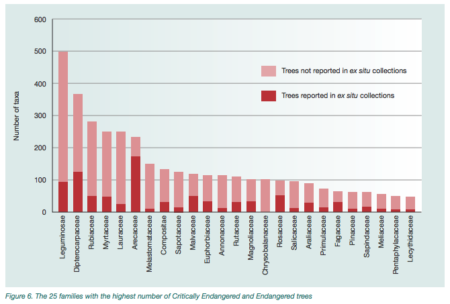- Grasspea gets some love.
- Hundreds of veggies still don’t, though.
- Deconstructing chocolate. The word, that is.
- Networking tree seeds in Rwanda.
- Drinking in Neolithic Britain.
Brainfood: Social media, Wheat double, Apple diversity, Land use change theory, Land use change praxis, Intensification, Ag metrics
- How Do Young Adults Engage With Science and Research on Social Media? Some Preliminary Findings and an Agenda for Future Research. Facebook, not Twitter. So I’m doing it all wrong? Any young adults reading this and want to tell me how I’m doing?
- Genetic dissection of grain zinc concentration in spring wheat for mainstreaming biofortification in CIMMYT wheat breeding. Two interesting regions on different chromosomes.
- Harnessing genetic potential of wheat germplasm banks through impact-oriented-prebreeding for future food and nutritional security. Not just Zn.
- Genetic analysis of a major international collection of cultivated apple varieties reveals previously unknown historic heteroploid and inbred relationships. The deep history of the justly famous UK collection.
- Middle-range theories of land system change. Towards a Grand Unified Theory. But do we need one?
- Classifying drivers of global forest loss. Commodities, basically. But what’s the good of that without a theory?
- The environmental costs and benefits of high-yield farming. Theory shtheory: measure externalities.
- Beyond Calories: A Holistic Assessment of the Global Food System. Micronutrients get lost disproportionately badly along the supply chain. How’s that for a theory?
Brainfood: Ecology of domestication, Citizen soybeans, Silkworm domestication, Barley spread, Indigenous management, Maize domestication, Temperate maize, Nutrient yields, Amazon history double, Women & diets, Online classification, Charred breadcrumbs, Wheat drought
- Crop domestication: anthropogenic effects on insect–plant interactions in agroecosystems. Domestication can upset trophic webs. Poor dears.
- The soybean experiment ‘1000 Gardens’: a case study of citizen science for research, education, and beyond. 2492 gardens, in fact.
- The evolutionary road from wild moth to domestic silkworm. Domestication in China, followed by multiple independent spreads and differentiation.
- Barley heads east: Genetic analyses reveal routes of spread through diverse Eurasian landscapes. 3 taxa, 8 genepools, multiple routes for spread. A bit like silkworm but in the opposite direction.
- A spatial overview of the global importance of Indigenous lands for conservation. 40% of all terrestrial protected areas.
- Maize domestication and gene interaction. More than just the headline 5 genes.
- Hallauer’s Tusón: a decade of selection for tropical-to-temperate phenological adaptation in maize. Need to go back to tropical germplasm for adaptation to temperate conditions.
- Moving beyond calories and protein: Micronutrient assessment of UK diets and land use. Roots, tubers and vegetables are the most land-efficient producers of 23 nutrients.
- The legacy of 4,500 years of polyculture agroforestry in the eastern Amazon. It is still with us.
- Direct archaeological evidence for Southwestern Amazonia as an early plant domestication and food production centre. And not just in the east.
- Does women’s time in domestic work and agriculture affect women’s and children’s dietary diversity? Evidence from Bangladesh, Nepal, Cambodia, Ghana, and Mozambique. Yes, but varies with socioeconomic status.
- Remap: An online remote sensing application for land cover classification and monitoring. Use your training set to detect habitat type(s) in Google Earth.
- Archaeobotanical evidence reveals the origins of bread 14,400 years ago in northeastern Jordan. Before domestication.
- Drought tolerance during reproductive development is important for increasing wheat yield potential under climate change in Europe. The good news is that germplasm close to the optimized ideotype for 2050 is already out there.
Saving trees
I’m not sure we have ever pointed to the Global Trees Campaign’s set of surveys of ex situ collections. There are individual surveys of ebony, Betulaceae, conifers, Zelkova, Rhododendron, maple, oak and Magnoliaceae, plus “Conserving the World’s Most Threatened Trees: A global survey of ex situ collections.” This came out in 2015 and includes a bunch of crop wild relatives.
Brainfood: Community forests, Pepper CWR, Banana spread, Blight plasticity, VIR wheat
- Research frontiers in community forest management. Trends are for hybrid business models, REDD+ interactions and the use of secondary data.
- Production of embryo rescued hybrids between the landrace “Friariello” (Capsicum annuum var. annuum) and C. baccatum var. pendulum: phenotypic and cytological characterization. Another crop wild relative enters the arena.
- Earliest Musa banana from the late Quaternary sequence at Fahien Rock Shelter in Sri Lanka. People used wild bananas for 40,000 years before domesticated triplods arrived 6000 years ago.
- Gene expression polymorphism underpins evasion of host immunity in an asexual lineage of the Irish potato famine pathogen. “…17 genes are not expressed in one of the two…isolates despite apparent absence of sequence polymorphisms.”
- Novel sources of resistance to Septoria nodorum blotch in the Vavilov wheat collection identified by genome-wide association studies. The collection that keeps on giving.
